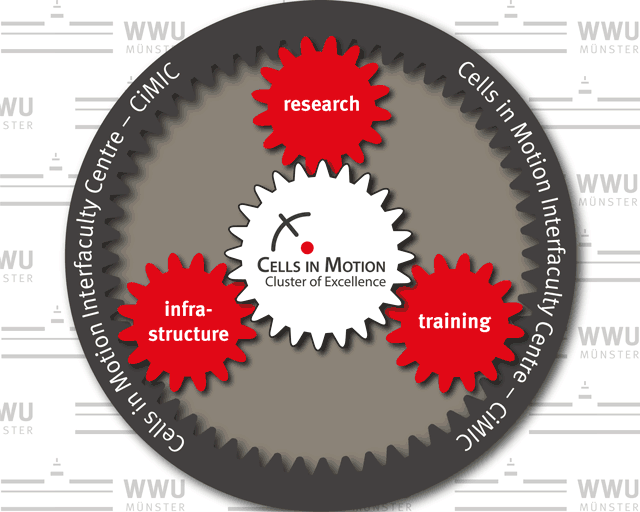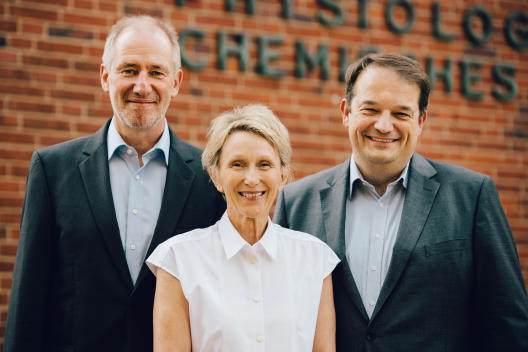Cells in Motion: From network to university centre

The Cells-in-Motion Interfaculty Centre (CiMIC) is now established as a central scientific institute and thereby permanently integrated into the infrastructure of the University of Münster; this was approved by the University Senate in January, 2018. CiMIC integrates the Cells-in-Motion Cluster of Excellence (CiM)-driven interfaculty research on cell dynamics and imaging, embedding this research focus long-term at the University.
Already in 2011 researchers from five faculties of the University of Münster and from the Max Planck Institute for Molecular Biomedicine in Münster joined forces to establish an interdisciplinary and interfaculty network promoting research excellence in cell biology. In 2012 the Cells-in-Motion Cluster of Excellence was granted funding by the German Research Foundation, and since then has worked towards breaking down the traditional barriers between disciplines and faculties to promote research creativity, and to introduce novel research oriented training programmes and new interfaculty research infrastructures. CiMIC integrates all CiM’s research and training activities and thereby converts the CiM network into a new interfaculty university centre. The CiM Cluster of Excellence has been the driving force behind CiMIC and behind new research and training directions that have been formulated into a new application in the Excellence Strategy of the German Research Foundation and the state governments in Germany.

CiMIC’s three pillars
Research: In CiMIC researchers study the complex behaviour of cells in living organisms. In order to do this they visualize molecular processes and structures across a range of different scales – from individual cells to organs and patients. Researchers from the fields of biomedicine, the natural sciences, and mathematics and computer science use imaging to aim to understand defined cellular behaviour and ultimately to use this information for the development of new diagnostic, therapeutic and preventive approaches in medicine. Over the last few years, CiM and the associated university faculties have established eight new professorships, including novel clinical translational professorships, strengthening basic research and promoting the transfer of research findings to clinical application.
Infrastructure: In the new Multiscale Imaging Centre (MIC), currently under construction, core CiM professors from different faculties will be housed under one roof. Researchers will engage in imaging-based biomedical research, bringing together a broad range of research concepts and methods – ranging from high-resolution microscopy to whole-body imaging modalities. MIC is an integral part of CiMIC and will continue to expand multiscale imaging concepts and technologies.
Support for junior researchers: CiMIC will integrate training of researchers at different career stages across the boundaries of traditional disciplines. CiM has already established structured research-oriented training programmes including the Master degree in Experimental Medicine for medical graduates, and the international CiM-IMPRS Graduate Programme for PhD students from the life sciences and natural sciences. The CiM Careers-in-Motion Centre develops and coordinates research-oriented training programmes and career-promoting measures, and supports gender equality among researchers.

